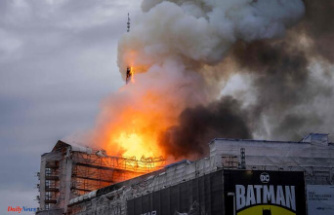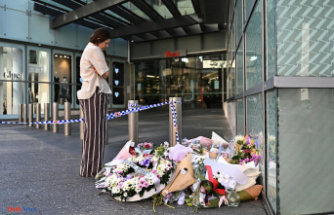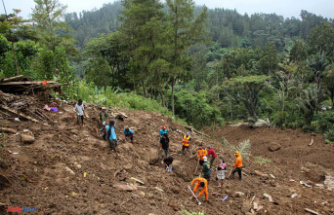out Of nowhere, up to the apex of power. To this day, the films we show to the cronies as a few elite warriors charged with protecting the great dignitaries of his enemies. They are right at average. Or rather forget about the source of these fighters. And is that, during the Republic were not more than a small escort dedicated to the safeguard of a leader of medium hair.
however, everything changed with the arrival with a reform motivated by the first emperor of Rome, Caesar Augustus. It was this character who shaped (and beyond by the year 27.C.) a new permanent body, formed by a minimum of 4500 men to which he entrusted his life. Thus was born the Guard Pretoriana that we all know today.
little by Little, his efficiency led to the Guard Pretoriana to become a unit capable of lifting up to run to the emperors. But also to take away this chair. Not in vain, their members murdered Caligula after having been humiliated by him and, later (around the year 41), gave him the power to Claudio (who bought them the not inconsiderable sum back then of 15.000 sestericos for man ). A century later, these military ended up also with the life of Pertinax , wronged by the lack of coins.
however, as real as this is that its members were few real tanks and caused dread to the enemies of Rome.
this has been confirmed by Stephen Dando-Collins in his work "The curse of the caesars: the fascinating chronicle of a period convulsed": "With the Empire, became a special force integrated police by members of the elite. Recruited exclusively in Italy, the cronies were better paid than legionaries, served for a shorter period of time (sixteen years since the end of the reign of Augustus) and received higher pay when you graduate ( 20.000 sestercios in opposition to 12.000 that he perceived a legionnaire).
the same view is Roger Collins in his book "The Europe of the High Middle Ages", where she defines as an "elite force" that was parked habitually in Rome, and that, "when the emperor had a personality of weak or was little able, they could control the regime."
beyond their ventures and misadventures, it's clear that being a member of the Guardia Pretoriana was not easy. In fact, and despite the reform of Severe (who ordered that "any vacancy in the cronies were covered with men of all the legions," because they knew much better the craft of the soldier) the training to which they had to undergo to become true killing machines, it was strict. Example is that they were not exempt from prepare for the contest by means of exercises carried out with wooden swords or, even, making use of the boxing.
TeachersIn the work "Cronies, the elite of the roman army", of Arturo Sánchez Sanz , is deepened in the training of this unit. A few exercises that the author compares with those undertaken by the spartans (and they became some of the best fighters of Old). "Although with an entirely different, own cronies were not behind such feats. In combat always fulfilled more than what was expected of them. If that was possible, even having to act on campaign only sporadically, due to both a strict selection of applicants as the daily workout performed", explains the expert in the above mentioned book.
in order To avoid that the high salary of the cronies will take to destroy his body to the base of beverage , food and whores , built a "campus". A complex formed by a temple , a baths and latrines in the preparing for the combat. "There are listened to daily the voices of the soldiers experts leading the training and instruction in combat techniques. Such was its importance that there were trainers so trained that their work was, exclusively, to prepare the own coaches," adds the author.
Thus, each expert was coaching a capacity of the combatants, as detailed by Raul Mendez Argüín in its documented dossier, "The guard pretoriana in combat":
1- " armatura " they trained the fighters in the art of fencing. His work was so important that they received training of the "discens armaturarum", some teachers of teachers who were in charge of that not to miss out the time to explain to their students the secrets of the swords.
2-" The "evocati" (soldiers reenganchados after fulfilling their basic service) infantry had a trainer specific, the "exercitator armatutarum", and " exrcitatores equitum praetorianum " they were dedicated to the riders," she explains, in this case, Sánchez Sanz.
3-The " doctor cohortis ", assisted by an "optio compi" supervised the training cohort. "They were placed very appreciated in cohorts and sought-after to continue climbing in the ranks. Formally it was experienced "evocati" which had served as "equites praetorianos", or already before that, as trainers," he adds.
The instructors had no mercy. So, they gave half of the ration to those combatants who do not progress as fast as they wanted.
Trainingall in all, Sanz is a supporter of that, beyond this structure, little is known of the daily routine of the cronies. Therefore, it implies that the training could be similar to that of the legionaries. "Priority should handle the weapons of combat, because it would depend on their lives and, in part, not only of their peers but victory in the battle", he explains.
In turn, had to learn how to form and march martially. "Do it properly required practice daily until exhaustion. The motion regular, a light step and was trained, initially without charge, until you do them with all the combat gear, in perfect synchronization," he adds. That was basic, for in full combat they need to know to stay tough and in training before the push into the enemy.
"To achieve such dexterity, the trainers initially organized marches daily of 20 roman miles in five hours (29.620 kilóemtros ), or 40 miles in twelve hours , and, later, 24 miles in five hours, a light step," stresses the expert. These exercises were common among the recruits who then repeated these distances carrying your entire team.
Neither were exempt from the fighters train the jump. In the end, they had to be prepared to be able to circumvent any obstacles placed by the enemy. "To do this they used a foal, jump, initially superándolo free of obstacles, and then, with all the equipment of a jump, carrying the gladius and the pilum in each hand", adds the author of the work.
Even were instructed in the immediate response they should give to signs that orders were carried out in the quickest way possible.
"The strength exercises were no less vital to a soldier. They must learn to resist the marches, to execute engineering work, lift camps, as well as load and use their weapons during ongoing atauqes. One arm tired after landing numerous blows or repel them could surrender earlier than expected," he says. The swimming and the horseback riding were also basic subjects.
Finally, and as is obvious, the weapons training was basic. Thus, the military is trained to attack the three key parts of the enemy's body: head , torso and legs .
Date Of Update: 25 September 2019, 18:03











